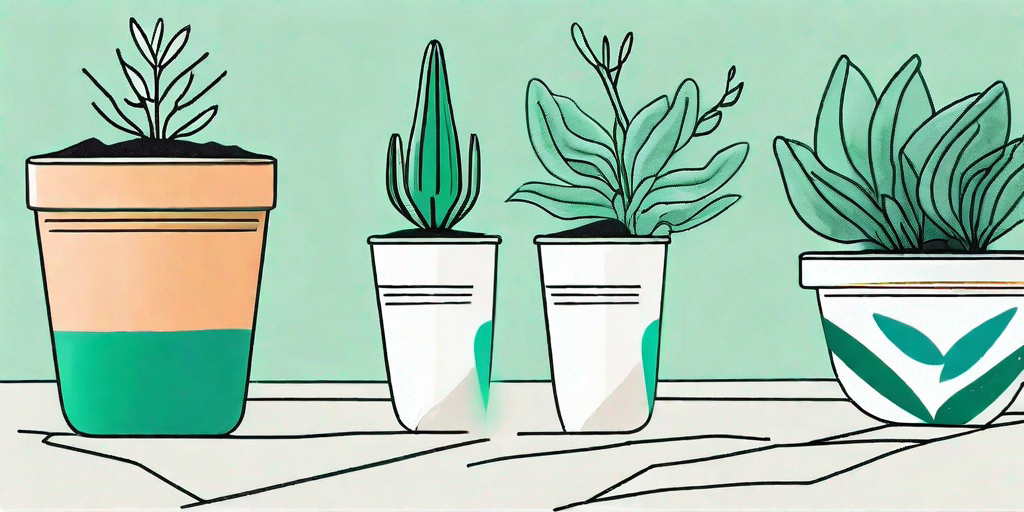
Ah, the age-old question that has plagued green thumbs and plant enthusiasts alike: to add or not to add soil to your potted plants? This is a question that has caused many a heated debate in gardening circles, and today, we're going to delve into this soil-stirring topic. So, grab your trowels and put on your gardening gloves, because things are about to get dirty.
Understanding the Basics of Potting
Before we can start throwing soil around willy-nilly, it's important to understand the basics of potting. The potting process is not as simple as just shoving a plant into a pot and calling it a day. There's a science to it, a delicate balance that needs to be struck to ensure your plant thrives.
Firstly, the type of plant you're potting will greatly influence the kind of soil you should use. Some plants prefer a more acidic soil, while others prefer a more alkaline environment. It's important to do your research and understand what your plant needs before you start potting.
Secondly, the size of the pot matters. A pot that's too small can stunt a plant's growth, while a pot that's too large can lead to root rot. It's like Goldilocks and the Three Bears, but with plants. You need to find the pot that's just right.
Lastly, the quality of the soil is paramount. Not all soil is created equal. Some soils are rich in nutrients, while others are as barren as the Sahara Desert. Again, it's important to understand what your plant needs and choose a soil that can provide those nutrients.
Adding Soil to Your Potted Plants
When to Add Soil
Now that we've covered the basics, let's get down to the nitty-gritty: when should you add soil to your potted plants? The answer is... it depends. (I know, I know, not the definitive answer you were hoping for, but bear with me.)
Generally speaking, you should add soil to your potted plants when the existing soil has become compacted or depleted of nutrients. This typically happens over time as the plant uses up the nutrients in the soil and as water causes the soil to compact. You might also need to add soil if you notice that the level of soil in the pot has decreased significantly, leaving the roots of your plant exposed.
Another time to add soil is when you're repotting a plant. This is a great opportunity to refresh the soil and give your plant a nutrient boost. However, be careful not to overdo it. Adding too much soil can cause problems like waterlogging and root suffocation.
How to Add Soil
Adding soil to your potted plants is not as simple as just dumping a bag of soil into the pot. There's a method to the madness, and it goes a little something like this:
- First, remove the plant from the pot. Be gentle! You don't want to damage the roots.
- Next, loosen the existing soil. This will help the new soil mix in more easily.
- Then, add the new soil. Make sure it's the right type for your plant!
- Finally, replant your plant. Make sure it's at the same depth as before, and give it a good watering to help the new soil settle in.
And voila! You've successfully added soil to your potted plant. Give yourself a pat on the back, you soil-slinging superstar!
Common Mistakes to Avoid
While adding soil to your potted plants can be beneficial, there are some common mistakes that you should avoid. These include:
- Adding the wrong type of soil. As mentioned earlier, not all plants like the same type of soil. Make sure you're adding a soil that's suitable for your plant.
- Adding too much soil. Overfilling your pot can lead to waterlogging and root suffocation. Remember, moderation is key!
- Not mixing the new soil with the old. If you simply dump new soil on top of the old, it can create a barrier that prevents water and nutrients from reaching the roots. Make sure to mix the new soil in with the old.
FAQs
Can I use garden soil for my potted plants?
While it might be tempting to just scoop up some soil from your garden and use it for your potted plants, it's generally not recommended. Garden soil can be heavy and compacted, which can lead to poor drainage. It can also contain pests and diseases. It's best to use a potting mix that's specifically designed for potted plants.
How often should I add soil to my potted plants?
This will depend on the type of plant and the quality of the existing soil. As a general rule, you should consider adding soil if the existing soil has become compacted or depleted of nutrients, or if the level of soil in the pot has decreased significantly.
Can I add too much soil to my potted plants?
Yes, adding too much soil can cause problems like waterlogging and root suffocation. It's important to add soil in moderation and ensure that it's properly mixed with the existing soil.
Conclusion
So, there you have it. The great potting dilemma: to add or not to add soil to your potted plants. As with many things in life, the answer is not black and white. It depends on a variety of factors, including the type of plant, the size of the pot, and the quality of the existing soil. But with a little bit of knowledge and a lot of love, you can master the art of potting and keep your plants happy and healthy.
Now, if you'll excuse me, I have some soil to sling. Happy potting!















